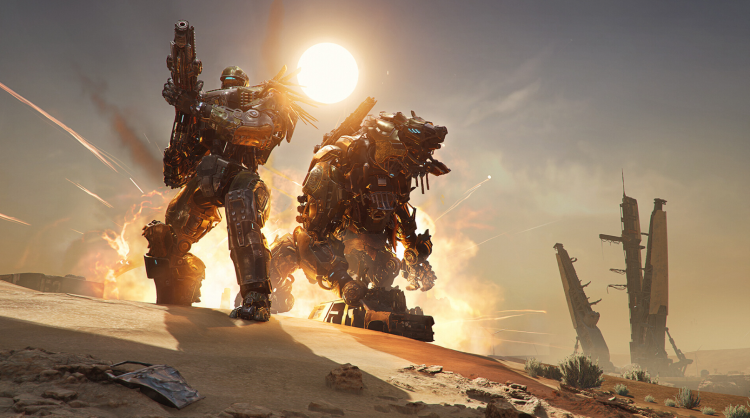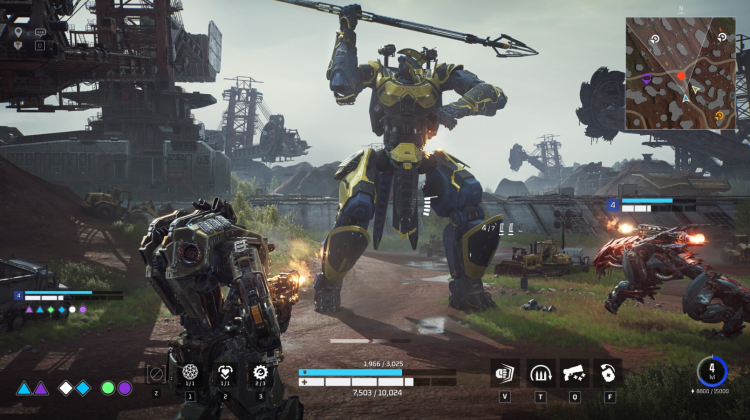Steel Hunters Follows the Familiar Path of Live-Service Shutdowns
Steel Hunters was supposed to be a big moment for Wargaming. It had cool mechs, fast action, and a loot-and-extract model that’s been popular since Escape from Tarkov blew up. But now, only a few months after launch, Wargaming has announced that Steel Hunters will shut down on October 8, 2025.
The game was revealed at The Game Awards in 2024, dropped into early access on PC this past April, and never quite found a stable player base. According to SteamDB, the peak concurrent player count hit 4,479 shortly after launch. Since then, it’s dropped to around 250. For a game trying to survive in the live-service market, those numbers aren't good enough.
Wargaming shared a statement confirming the shutdown, saying:
"You've given us so much passion and support but unfortunately we've come to the conclusion that continuing development is not sustainable."
It’s a polite way of saying the player count wasn't worth the cost. There’s no drama, no scandal. Just a game that didn’t catch on fast enough.
In the next 90 days, Steel Hunters players can still hop in and play. Wargaming is unlocking all of the game’s unique Hunters—including some that were still in development—and adding custom game support. A final farewell tournament is also being planned before the servers go dark.
Steel Hunters was a mech-based extraction shooter. You dropped in, fought enemy NPCs and other players, grabbed loot, and tried to escape alive. The mechs were the main attraction. Some looked like humanoid tanks. Others resembled mechanical animals, similar to the Zoids anime. Each one could be modded with different weapons and abilities, offering some solid combat variety. But the style wasn’t enough to carry it.
The game had a decent idea on paper. But in execution, Steel Hunters faced the same pressure as most live-service games: it needed players to keep playing. Constant content drops, community feedback, monetization that doesn’t alienate the fanbase—all of this matters. And even if one or two things are off, the player base moves on.
Steel Hunters isn't alone in this kind of collapse. Just in the past year, several other live-service titles shut down quickly after launch. Nexon's melee action game Warhaven lasted just seven months. Sony’s Concord shooter barely made it out the door before server shutdowns were announced. Anthem, EA's troubled live-service sci-fi game from BioWare, will also shut down in January 2026. These are big publishers. Big games. None of them were immune.
So why does this happen so often?
First, the live-service model demands a lot of time from players. That means your game isn’t just competing with new titles. It’s also fighting Fortnite, Apex Legends, Call of Duty, Destiny 2, and other ongoing giants. To succeed, you have to give players a reason to leave those games—and to keep coming back.
Second, many of these titles launch too early. Steel Hunters entered early access, which is meant to give devs time to build the game alongside the community. But if your early access launch doesn’t land, it’s hard to get that momentum back. People check it out, bounce off, and don’t return.
Third, players have learned to be cautious. When live-service games die, everything goes with them. Progress. Cosmetics. Achievements. Once a game shuts down, it's gone for good. There’s no offline mode or way to keep playing. That makes people hesitant to invest their time or money unless they’re sure the game will last.

That doesn’t mean live-service is a bad idea. When done well, it works. Just look at Warframe. Digital Extremes launched it more than a decade ago, and it continues to grow. Final Fantasy XIV rebounded after a rough start to become one of the most beloved MMOs out there. Deep Rock Galactic has built a passionate community through consistent updates and co-op fun.
These games show it’s possible. But they also took time, honest communication, and support from their studios. The failure rate is much higher than the success stories.
Wargaming isn’t giving up on live-service altogether. World of Tanks is still going strong, and they continue to support it with themed updates and new content. But Steel Hunters clearly didn’t reach the level of support or revenue needed to stick around. And in a world where keeping servers online costs money every day, decisions like this come fast.

From a design perspective, Steel Hunters had potential. Extraction shooters aren’t easy to build, especially when layered with mech customization and PvEvP balance. But the execution matters more than the concept. Games need polish. They need community buzz. They need to be fun right away, and they need a reason to come back next week.
Steel Hunters will still be playable until October. If you want to try it, now is the time. After that, it’ll be another reminder that in the live-service space, nothing is guaranteed.
And players aren’t the only ones paying attention. Developers are, too. Some are now looking for alternatives. Offline modes. Single-player options. Or games that can scale without needing thousands of concurrent players just to break even. Not every game needs to be the next Destiny. Sometimes it’s better not to compete at all.

Comments